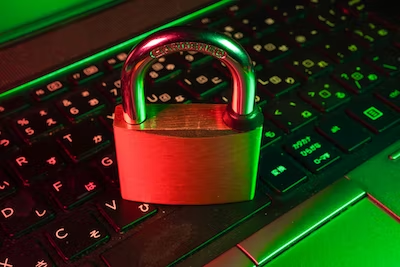Comments
- No comments found

SAP systems play a crucial role in the operations of many organizations, from managing financial transactions to tracking inventory.
With the increasing risk of cyber attacks, securing vital organizational systems has become a top priority for businesses. In this article, we will discuss some best practices for securing SAP Security systems and effective risk management.

Before delving into the best practices for securing SAP systems, understanding the potential risks associated with them is essential. Cybercriminals can exploit vulnerabilities in SAP systems to gain unauthorized access, steal sensitive data, and disrupt business operations. Some common risks associated with SAP systems include:
Unauthorized access to critical data and systems
Malware and virus attacks
Denial of service (DoS) attacks
Cross-site scripting (XSS) attacks
SQL injection attacks
To effectively mitigate these risks, businesses must implement robust security measures to secure their SAP systems.

Keeping your SAP systems updated with the latest patches and updates is crucial in mitigating potential security risks. Software vendors regularly release updates and patches to address vulnerabilities and security loopholes in their systems. By keeping your SAP systems updated, you can ensure that they are protected against the latest cyber threats.
Weak passwords are a leading cause of security breaches in SAP systems. Businesses must implement strong password policies, such as enforcing complex passwords and regular password changes, to mitigate this risk. Companies can also implement two-factor authentication to include an extra layer of security.
Limiting access to critical systems and data is essential in securing SAP systems. Businesses must ensure that only authorized personnel have access to sensitive information and that their access is restricted based on their job roles and responsibilities. Additionally, businesses can implement access control measures, such as multi-factor authentication and role-based access control, to enhance security.
Encrypting sensitive data can effectively protect against data breaches and unauthorized access. Businesses can implement encryption technologies to protect their SAP systems' data at rest and in transit.
Monitoring and logging are essential in detecting and responding to security incidents in SAP systems. Businesses must implement real-time monitoring and logging to identify potential threats and react quickly to security incidents.
Regular security audits are crucial in identifying potential security loopholes and vulnerabilities in SAP systems. Businesses can conduct regular security audits to identify gaps in their security measures and implement effective risk management strategies.

Effective risk management strategies involve proactive measures to mitigate potential security risks in SAP systems. Some effective risk management strategies include:
Threat modeling involves identifying potential threats and vulnerabilities in SAP systems and implementing security measures to mitigate them. Businesses can conduct threat modeling exercises to identify potential security risks and implement effective risk management strategies.
Incident response planning involves developing a plan to respond to security incidents in SAP systems. Businesses can develop incident response plans to respond quickly to security incidents and minimize their impact on business operations.
Employee training and awareness are essential in ensuring that personnel know potential security risks and how to respond to them. Businesses can conduct regular employee training and awareness programs to ensure personnel are well-equipped to handle potential security incidents.
Two-factor authentication (2FA) offers an extra layer of security that needs users to provide two forms of identification before accessing the SAP system. The use of Two-factor authentication can help prevent unauthorized access even if a user's password is compromised. Two-factor authentication is implemented using hardware tokens, software tokens, or SMS-based authentication.
Encryption occurs when data is converted to a code to prevent unauthorized access. Businesses should implement encryption to protect sensitive data stored within the SAP system, such as customer information or financial data. Companies can implement encryption at the application, database, and network levels to protect data at all times.
Third-party vendors or contractors with access to the SAP system can pose a security risk. Businesses should implement controls to monitor and manage third-party access. These controls include reviewing the access privileges of third-party users, restricting their access to only what is necessary for their job, and monitoring their activity while they are logged into the SAP system.
Securing SAP systems is critical to effective risk management for organizations. With increasingly sophisticated cyber-attacks, it is essential to implement best practices to protect sensitive data and prevent unauthorized access. When companies adopt a proactive approach to security, they can limit damage from data breaches and other security incidents resulting in possible financial losses and reputational damage.
Some key takeaways from this article include the need to conduct regular security assessments, establish clear security policies and procedures, implement access controls, and provide ongoing employee training. Additionally, organizations should consider using specialized security solutions designed for SAP systems and partnering with experienced security professionals who can help identify and address potential vulnerabilities.
Effective risk management requires a commitment to ongoing security and a willingness to adapt to changing threats. By implementing best practices for securing SAP systems, organizations can help protect critical business data and maintain the trust of their customers and stakeholders.
Leave your comments
Post comment as a guest